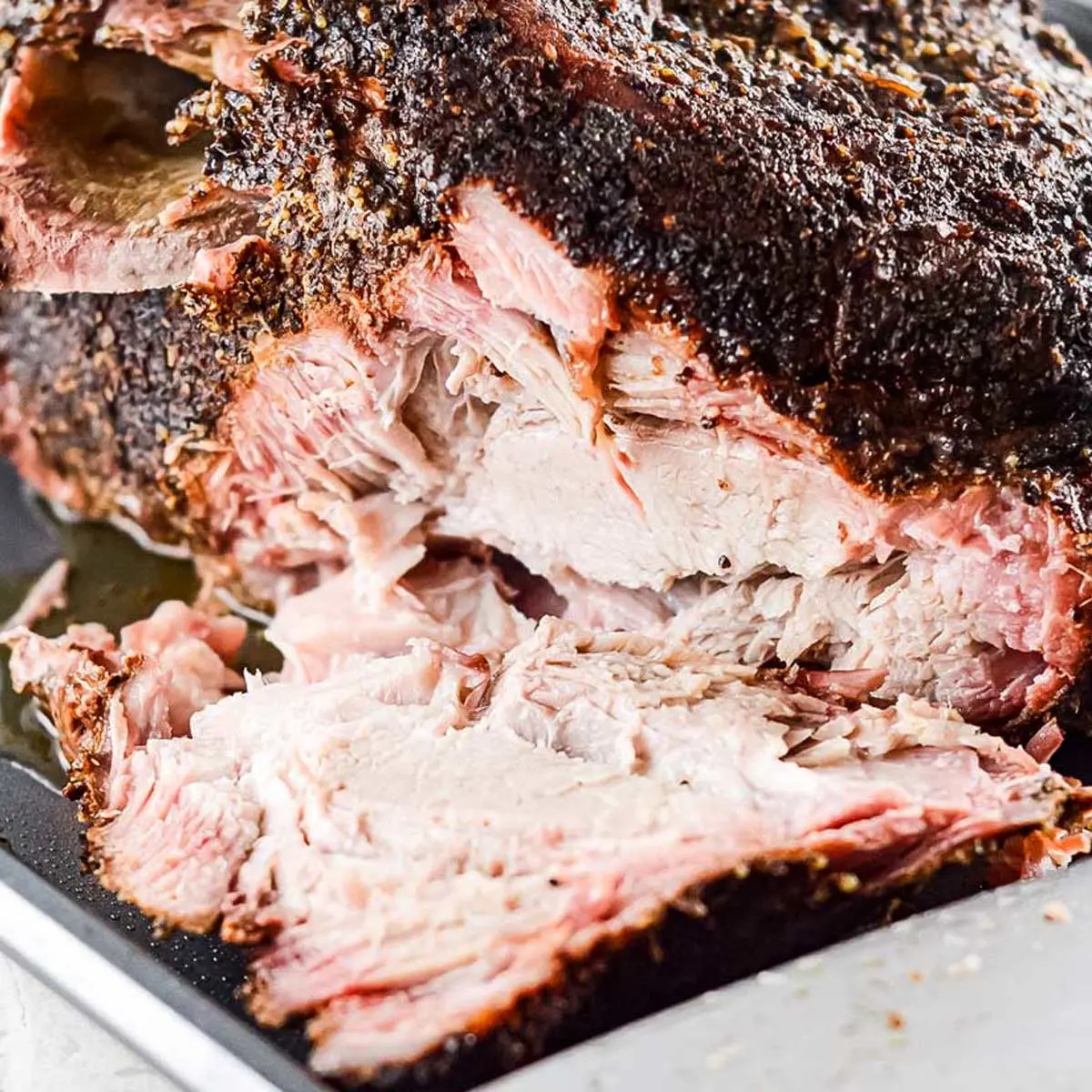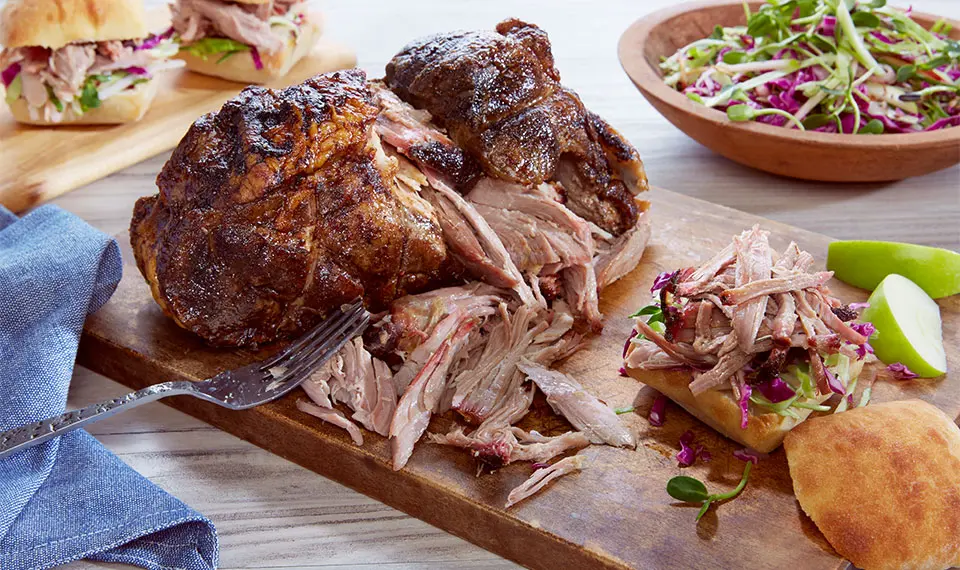Smoking pork shoulder is a time-honored tradition in the world of barbecue. The slow cooking process infuses the meat with a delicious smoky flavor, while also creating a tender and juicy texture. However, achieving the perfect applewood smoked pork shoulder can be a challenge for some. If you've ever wondered why your smoked pork shoulder isn't as tender as you'd like, we're here to help.
Why is my smoked pork shoulder not tender?
If your smoked pork shoulder isn't tender, the most common reason is that it needed more cooking time. The key to tender pork shoulder is achieving the right temperature during the smoking process. It's important not to rely solely on cooking time, but rather on the internal temperature of the meat.

When smoking pork shoulder, aim for a cooking temperature between 225°F to 250°F. This low and slow cooking method allows the meat to break down slowly, resulting in a tender and succulent texture. To ensure even cooking, keep the pork shoulder sealed in the smoker for at least the first two hours, as long as the temperature remains stable. After two hours, rotate the butt 180° to ensure it cooks evenly.
Remember the saying, if you're lookin', you ain't cookin'. It's best to avoid opening the lid of the smoker as much as possible, unless there appears to be a problem. This helps maintain a consistent temperature throughout the cooking process.
Use an instant-read thermometer to check the internal temperature of the pork shoulder in several places, avoiding the bone if there is one. The ideal temperature range for a perfectly cooked pork shoulder is between 185°F to 200°F. However, don't rely solely on the thermometer reading. Judge the tenderness of the meat by feel when inserting the temperature probe. It should easily slide into the meat with little to no resistance.
Additional Tips for Tender Smoked Pork Shoulder
If you're short on time or feeling a bit lazy, you can speed up the cooking process by using the texas crutch method. After smoking the pork shoulder for a few hours, remove it from the smoker and wrap it tightly in foil. Place it in a large aluminum pan and spray it with apple juice. Transfer the pan to a preheated 250°F oven until the desired temperature is reached.
The total cooking time for a smoked pork shoulder can vary, typically ranging from 5 to 11 hours. Several factors contribute to the cooking time, including the size of the shoulder, the initial temperature when placed in the smoker, and the weather conditions. Using the oven after a few hours of smoking allows you to achieve a tender result without having to maintain the smoker temperature for an extended period.
If you prefer a less crusty bark on the finished product, you can try a method that involves starting the smoking process in the evening and finishing in the oven overnight. Place one or two pork shoulders on the smoker around 8-9 pm after dinner. Then transfer them to the oven around 11 pm to midnight. Allow them to finish cooking in the oven overnight. This method may result in a softer bark, but the meat will still be tender and flavorful.
Once the pork shoulder reaches the desired temperature, remove it from the oven or smoker. Use BBQ gloves to carefully remove the meat from the pan and double wrap it in foil. Place the foil-wrapped pork shoulder in an old cooler and cover it with towels for at least an hour. This resting period allows the juices to redistribute, resulting in a moist and tender final product.
Don't be discouraged if your first attempt at smoking a pork shoulder isn't as tender as you'd hoped. With practice and a little patience, you'll soon master the art of applewood smoked pork shoulder. Remember to monitor the temperature, avoid opening the smoker unnecessarily, and give the meat ample time to rest before serving.
Frequently Asked Questions
Can I use a different type of wood for smoking pork shoulder?
While applewood is known for its sweet and mild flavor, you can experiment with other types of wood to add different flavors to your smoked pork shoulder. Popular options include hickory, mesquite, and cherry wood. Each wood variety imparts a unique taste, so feel free to try different combinations to find your preferred flavor profile.
How do I prevent the pork shoulder from drying out during the smoking process?
To prevent the pork shoulder from drying out, make sure to wrap it tightly in foil or butcher paper during the smoking process. This helps trap the moisture and keeps the meat tender. Additionally, periodically spritzing the pork shoulder with a liquid, such as apple juice or a vinegar-based marinade, can help keep it moist and flavorful.
Can I smoke a frozen pork shoulder?
While it's recommended to thaw the pork shoulder before smoking for even cooking, you can smoke a frozen pork shoulder. However, keep in mind that the cooking time will be longer, and it may take additional time for the meat to reach the desired internal temperature. It's essential to monitor the temperature carefully and adjust the cooking time accordingly.
In Summary
Smoking an applewood smoked pork shoulder requires time, patience, and attention to detail. By maintaining the right temperature, avoiding unnecessary lid openings, and allowing the meat to rest adequately, you can achieve a tender and flavorful result. Experiment with different wood varieties and cooking methods to find your perfect balance of smoky goodness. With practice, you'll become a master of the art of smoked pork shoulder.
If you want to know other articles similar to Ultimate guide to tender & flavorful applewood smoked pork shoulder you can visit the Barbecue category.


Related Articles